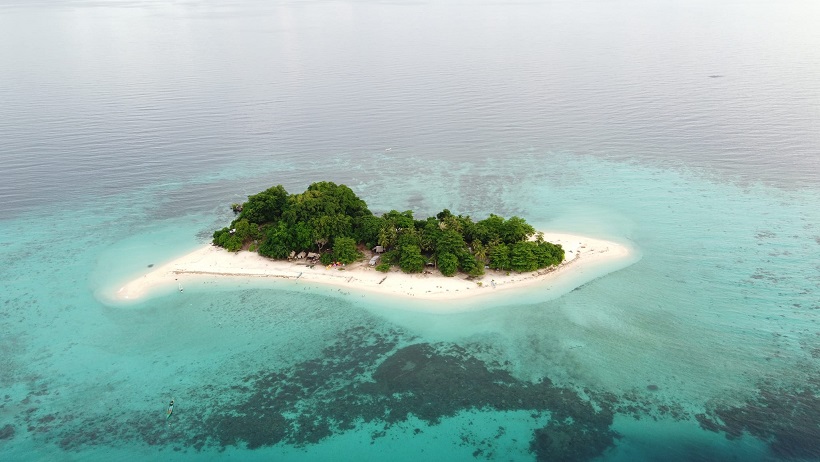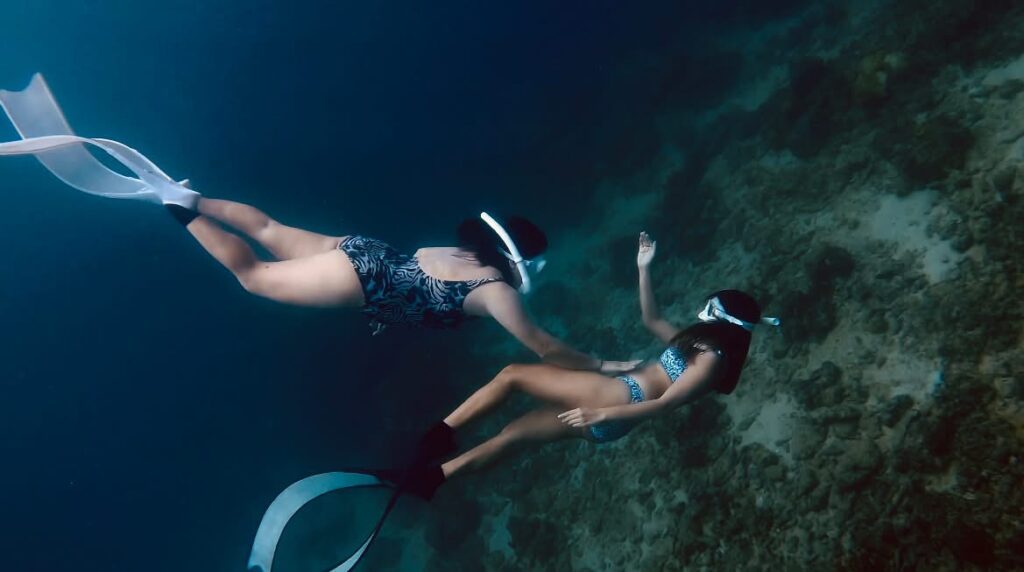Dapitan Scuba Diving: Explore Top Dive Sites in Zamboanga del Norte
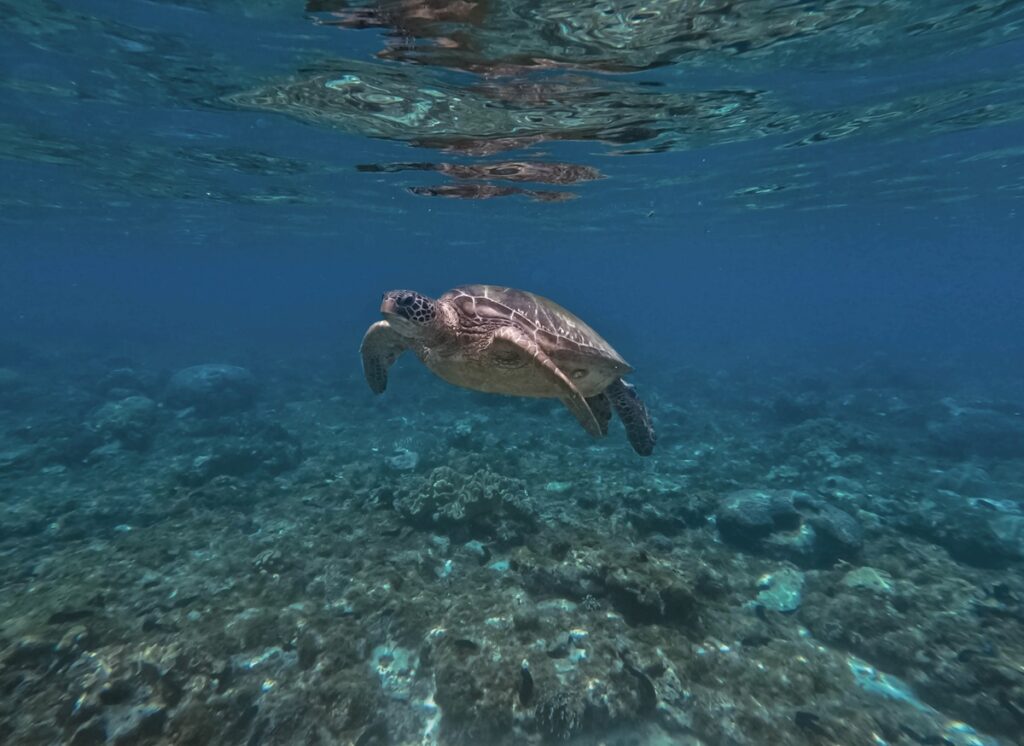
Why I Keep Coming Back to Dapitan’s Waters
There’s something magnetic about Dapitan City. Tucked away in the quiet corners of Zamboanga del Norte, it’s a historical landmark and a diving paradise waiting to be explored. When most people hear “Dapitan,” they think of José Rizal’s exile or heritage sites, but beneath its coastal waters lies an untouched marine sanctuary teeming with life.
I didn’t expect Dapitan scuba diving to completely change the way I see Mindanao’s coastline. But after diving through its crystal-clear waters and seeing reef walls drop into endless blue, I was hooked. From the vibrant coral gardens off Aliguay Island to the gentle slopes of Balas Balas, every dive feels like discovering a secret. It’s one of the best-kept diving secrets in the Philippines and that’s exactly what makes it so special.
Why Choose Dapitan for Scuba Diving?
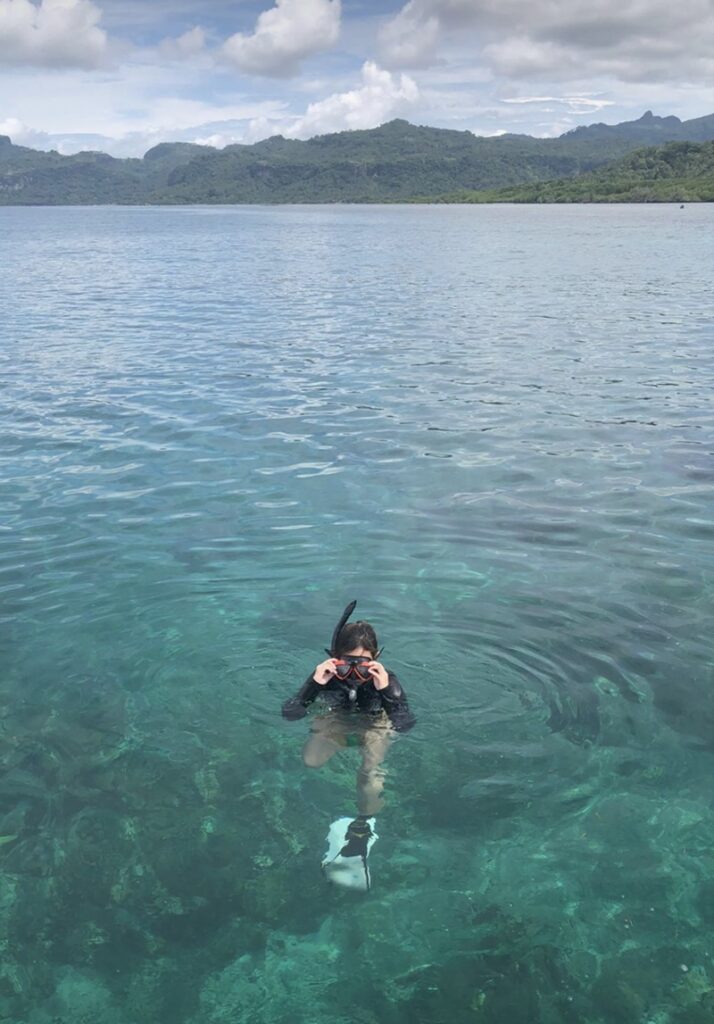
Hidden Gem for Divers in Mindanao
Unlike crowded dive hubs like Moalboal or Anilao, Dapitan offers a serene, off-the-beaten-path experience. Its diving scene is still young, which means clearer waters, unspoiled reefs, and marine life that thrives without disruption. You don’t have to fight for fin space here. You’ll often have entire dive sites to yourself.
Access to Diverse Dive Sites in Zamboanga del Norte
Within boat distance from the main city, you’ll find dive spots that rival even the best in the country. Aliguay Island diving boasts coral canyons and turtle encounters. Balas Balas offers gentle currents, ideal for beginners or relaxed macro dives. And Asinero, near Dakak, hides colorful coral bommies and small reef sharks. Each site tells a different story and caters to various diving skill levels.
Incredible Marine Biodiversity in Dapitan
Expect to see a school of fusiliers flash past, spot a resting green sea turtle, or hover over patches of brain coral and sea fans. Dapitan’s marine biodiversity benefits from being far from industrial run-off and heavy tourism. The water clarity alone. Sometimes stretching 25 meters of visibility, makes it a dream for underwater photography and freediving too.
Affordability and Accessibility
Flights to Dipolog (the nearest airport) are affordable, and a short 30-minute ride brings you to Dapitan. Dive packages here are often cheaper than those in major tourist destinations, but without compromising on safety or quality. Local resorts and dive centers like Dakak Aqua Sports Center offer everything from guided dives to PADI certification courses.
Conservation-Focused Community
The local government, together with community-led initiatives, actively protects many of Dapitan’s dive spots. Areas like Selinog Island are declared marine sanctuaries, helping preserve coral health and marine life. You’re supporting eco-tourism and helping protect one of the Philippines’ most overlooked marine treasures.
Top Dive Sites in Dapitan: Where to Dive and Why It’s Worth It 🪸
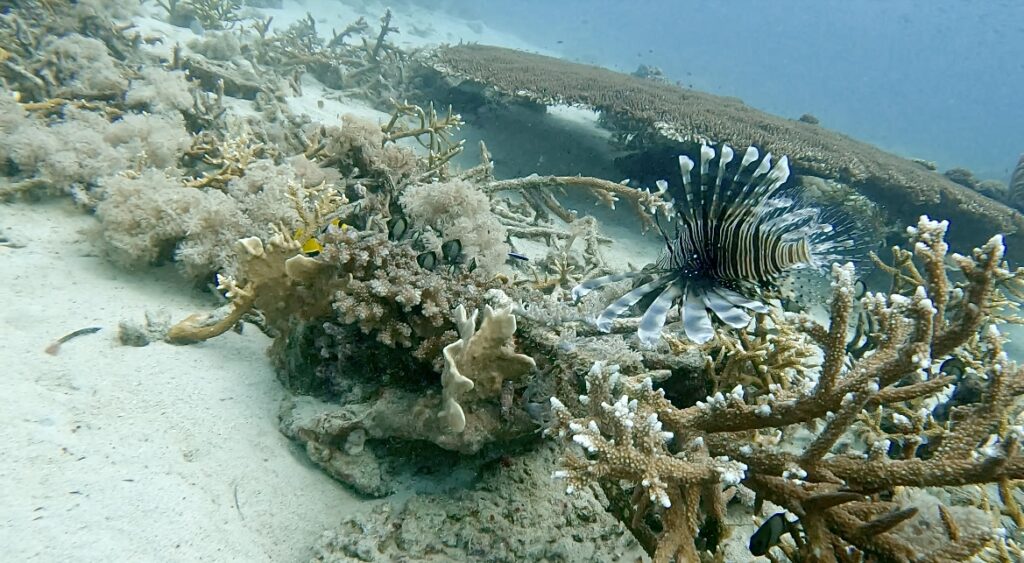
From coral-covered walls to fish-filled pinnacles, Dapitan scuba diving offers a surprising diversity of sites for both beginners and seasoned divers. Here are the top curated dive spots that showcase the marine richness of Zamboanga del Norte.
1. Eskwelahan Dive Site – Aliguay Island’s Aquatic Classroom
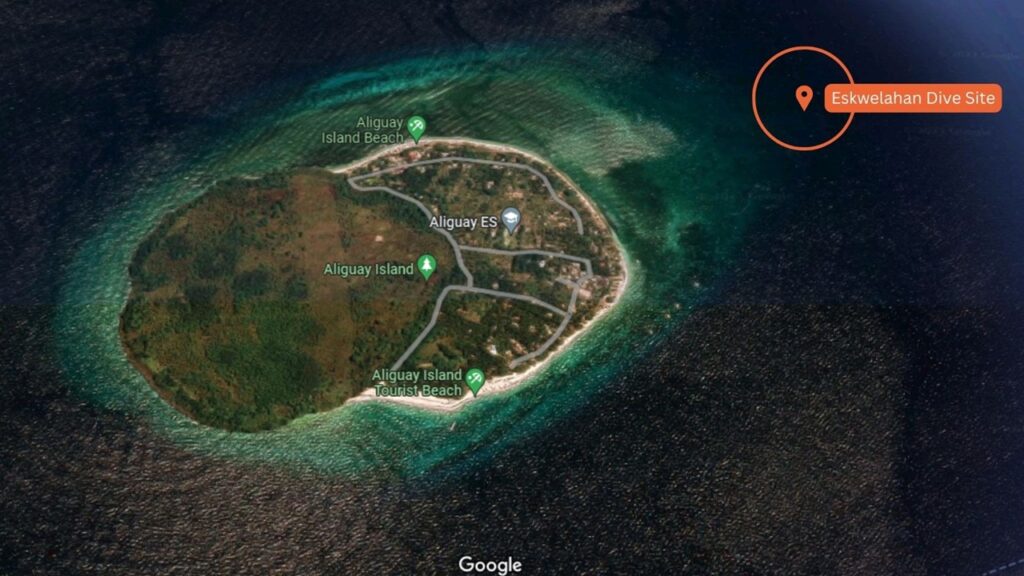

Often considered the crown jewel of Dapitan’s dive sites, Eskwelahan is located just off the marine sanctuary of Aliguay Island, about an hour by boat from the mainland.
The name “Eskwelahan” (school) reflects the site’s teeming schools of fish, including barracudas, jackfish, mackerels, snappers, diamond angelfish, bannerfish, and surgeons. Lucky divers may even spot manta rays, reef sharks, whale sharks, and sea turtles passing through.
- Highlights: Dramatic coral slopes, large pelagic sightings, vibrant soft and hard corals
- Depth: 20–30 meters
- Skill level: Beginner to advanced
- Why dive here: It’s Dapitan’s most biodiverse site, ideal for wide-angle photography and unforgettable encounters.
2. Tag-ulo Dive Site – Vertical Reef Wall in Dapitan Bay
Located in Tag-ulo, Dapitan City, this site features a stunning vertical wall that drops down to 15 meters. Divers can comfortably hover at 5 to 10 meters and enjoy the reef-lined wall, which is blanketed with thriving soft and hard corals.
Expect sightings of lionfish, banners, bamboo sharks, barracudas, and the occasional sea turtle. The terrain makes it a favorite among both freedivers and scuba divers.
- Highlights: Wall diving, reef fish, and macro opportunities
- Depth: 5–15 meters
- Skill level: All levels
- Why dive here: Easy access and great light for photography along a breathtaking vertical reef.
3. Liuay Rock – Pinnacle Diving and Macro Haven
Liuay Rock Dive Site features a rocky pinnacle that juts out from the seafloor, covered in soft and hard corals, anemones, and macro marine life—a hotspot for underwater photographers.
This site is perfect for practicing buoyancy and capturing nudibranchs, shrimp, and tiny reef dwellers.
- Highlights: Coral-covered rock formation, great for macro photography
- Depth: 5–20 meters
- Skill level: Beginner to advanced
- Why dive here: Shallow areas are great for snorkeling and freediving, while deeper zones offer plenty of reef action.
4. Taguilon Pier – Night Diving and Pier Life Exploration
Only a five-minute ride from Dakak Beach, Taguilon Pier is one of the most unique dive spots in the area. It features pilings encrusted with coral and hosts fascinating macro creatures like ghost pipefish, shrimp, and nudibranchs.
At night, this site transforms, perfect for underwater night photography.
- Highlights: Pier pillars, night dives, and macro critters
- Depth: Max 10 meters
- Skill level: Beginner to advanced
- Why dive here: A safe, shallow site for beginners with exciting discoveries for experienced macro hunters.
5. Canlucani Dive Site – Dive Training Meets Reef Discovery
Often used by Dakak Aqua Sports Center for PADI training, Canlucani is a beginner-friendly dive site with a sandy “driveway” that leads to twin coral patches. It’s simple, safe, and surprisingly scenic.
Watch for mackerels, reef fish, sea snakes, and garden eels tucked into the sand.
- Highlights: Ideal for training dives, reef on both sides, calm water
- Depth: 5–15 meters
- Skill level: Beginner to advanced
- Why dive here: A controlled environment for dive lessons, with just enough marine life to keep it interesting.
6. Aseniero Dive Site – Sloping Reef into a Coral Cove
Just off Dakak Beach Resort, Asinero is a lesser-known dive site that surprises many with its coral cover and fish activity. It’s part of the house reef accessible through Dakak Aqua Sports Center, making it easy to reach without a long boat ride.
- What to see: Hard corals, parrotfish, moorish idols, stingrays, and sometimes juvenile reef sharks.
- Top features: Compact reef system with tunnels, crevices, and coral bommies.
- Skill level: Intermediate to advanced.
Asinero is ideal for divers looking for a semi-challenging site with rewarding visuals. If you love reef exploration and a mix of open blue and structured coral terrain, this spot is for you.
Aseniero starts with a gentle reef slope and leads into a cove lined with coral. Known for its wide biodiversity, this site is often home to lionfish, nudibranchs, reef octopuses, and anemone fish.
It’s ideal for divers who enjoy a mix of reef structure and easy swim paths with low current.
- Highlights: Coral cove, sloping reef, and macro life
- Depth: 5–22 meters
- Skill level: Beginner to advanced
- Why dive here: Balanced terrain for casual exploration, photography, and laid-back dives.
7. Balas Balas Dive Site: Gentle Slope, Macro Life, and Reef Health

Closer to the mainland, Balas Balas is often the first stop for dive beginners or those who want a relaxing descent. The reef here is a gentle slope that leads to scattered coral heads and sandy patches where marine critters hide.
- What to see: Seahorses, nudibranchs, crinoids, and colorful reef fish.
- Top features: Shallow waters, perfect buoyancy practice, and great light for macro shots.
- Skill level: Beginner to intermediate.
The Balas Balas dive site also serves as a training ground for new divers, and the calm conditions make it perfect for open water checkouts or even fun dives after a long break.
8. Selinog Island: Remote Marine Sanctuary with Pristine Reefs
For the more adventurous diver, Selinog Island is about 1.5 hours away by boat, but the trip is worth every minute. A designated marine sanctuary, Selinog is known for its healthy reef ecosystem and biodiversity.
- What to see: Lionfish, anemone clusters, batfish, coral spires, and schools of jacks.
- Top features: Rugged reef formations, protected waters, and fewer divers.
- Skill level: Intermediate due to the boat distance and sometimes unpredictable currents.
Selinog Island diving offers a sense of discovery. You’re diving in one of the most untouched spots in Zamboanga del Norte, where marine life thrives in the absence of mass tourism.
Each dive site in Dapitan has its own personality, whether it’s the lively currents of Aliguay, the peaceful macro scenes in Balas Balas, or the untouched beauty of Selinog Island. This diversity is what makes Dapitan scuba diving so rewarding. You explore, you learn, and you fall in love with a part of the Philippines that still feels wild and free.
Diving Centers and Resorts: Where to Stay and Dive in Dapitan
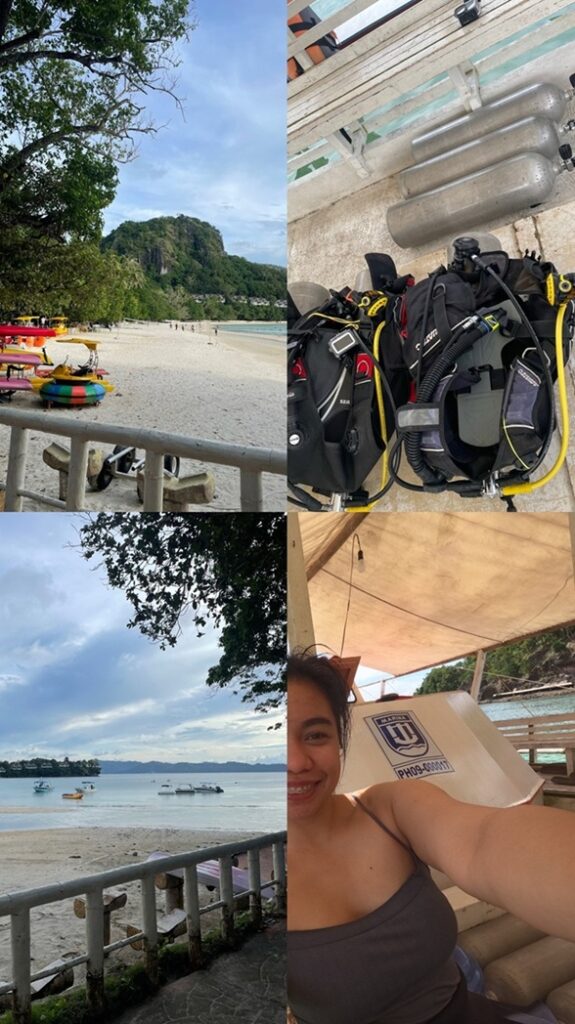
Dapitan scuba diving is also about where you start the adventure. Luckily, Dapitan offers a few solid choices when it comes to diving resorts and dive centers that make your experience smooth, safe, and memorable.
Dakak Aqua Sports Center
If you’re serious about diving in Dapitan, this is the most established PADI-certified facility in the area. Located within Dakak Park and Beach Resort, the Dakak Aqua Sports Center offers full-service dive operations, from fun dives and gear rentals to full PADI Open Water and Advanced courses.
- Why it’s a top pick: The center gives you direct access to Asinero Reef, one of the best house reefs in Zamboanga del Norte. No long boat rides needed. You can walk in, gear up, and dive within minutes.
- Facilities: Modern gear, experienced local dive masters, nitrox availability, and even jet skis, paddle boards, and snorkeling options for your non-diver friends.
Marine Life Encounters: What You’ll See Beneath Dapitan’s Surface
What makes Dapitan scuba diving so underrated is what lives in its waters. Zamboanga del Norte’s marine biodiversity is rich, colorful, and relatively untouched. These dive sites might not be as famous as Apo Reef or Tubbataha, but they offer an intimacy with marine life that’s hard to find in more commercialized areas.
🐠 Coral Reefs in Dapitan
Dapitan’s coral ecosystems, especially in Aliguay Island, Selinog, and Asinero Reef, are in surprisingly good condition. You’ll find:
- Massive brain corals and cabbage patches
- Gorgonian sea fans waving along the reef walls
- Vibrant soft corals in pastel tones that thrive in calm shallows
Thanks to limited commercial fishing and local conservation programs, these coral gardens remain healthy and full of life.
🐢 Common Marine Life in Dapitan Waters
Get your underwater camera ready. Here are some of the marine creatures you’re likely to encounter:
- Green sea turtles gliding peacefully near Aliguay’s drop-offs
- Anemonefish darting between soft corals at Balas Balas
- Fusiliers and snappers swimming in synchronized patterns
- Pufferfish, butterflyfish, and moorish idols adding bursts of color
- Nudibranchs and macro species hiding in crevices
- Occasional reef sharks and rays near the deeper edges of Asinero
🐚 What Makes Dapitan’s Marine Life Special
The lack of diver crowds and boat traffic gives marine life the chance to thrive. Fish are curious, not spooked. Turtles hang out in the open instead of fleeing. And corals haven’t been stepped on or kicked by careless fins. It’s this raw, untouched experience that makes Dapitan scuba diving unforgettable.
Whether you’re hunting for macro life or just want to float peacefully with a turtle, Dapitan’s underwater world is a sanctuary. It’s the kind of place that makes you want to stay longer. And return.
Travel Tips for Divers: How to Make the Most of Your Dapitan Dive Trip
How to Get to Dapitan City, Zamboanga del Norte
Dapitan is accessible via air, sea, and land—making it an easy trip whether you’re coming from Luzon, Visayas, or another part of Mindanao.
- By Air: Book a flight to Dipolog Airport (DPL). From there, Dapitan City is just a 30-minute drive. Flights from Manila, Cebu, or Davao are regular and affordable.
- By Sea: You can also take a ferry to Dapitan via 2GO Travel or Lite Ferries, especially if you’re coming from Cebu or Dumaguete.
- By Land: Buses and vans from Zamboanga City, Pagadian, or Ozamiz can bring you directly to Dapitan.
Best Time to Dive in Dapitan 🌤️
The ideal months for scuba diving in Dapitan are November to May—the dry season. During this time, waters are calmer, visibility is excellent (often 20–30 meters), and boat rides are smoother.
Avoid the monsoon season from June to October, when seas can be choppy and dive trips are more weather-dependent.
Where to Stay in Dapitan City: Accommodation Near Dive Sites
Whether you’re staying at a dive resort or a local guesthouse, there’s a wide range of options in Dapitan:
Luxury Dive Resorts
- Dakak Park and Beach Resort (with direct dive access and amenities)
Mid-Range Inns
- Travelbee Heritage Inn
- B&S Orchids Suites Hotel
- Prince Econotel
Budget Backpacker Options
- Filipinas Hostel in Padre Ramon St. Brgy. Biasong, Dipolog City. You may contact Filipinas Hostel through their Facebook page here.
Always check if your accommodation offers dive packages or transport to sites like Aliguay Island or Balas Balas.
Bonus Travel Tips
- Bring reef-safe sunscreen—Dapitan’s corals are too beautiful to harm.
- Some dive sites have entrance fees or conservation charges, so bring small bills.
- For non-divers, Dapitan is full of heritage tours, Rizal’s shrine, and sunset boat rides along the river.
Freediving in Dapitan City
Scuba may get most of the attention, but freediving in Dapitan offers its own kind of magic. The city’s calm waters, gentle reef slopes, and incredible visibility make it a perfect destination for both beginner and experienced freedivers. Whether you’re training your breath-hold or just chasing that feeling of weightless freedom, Dapitan delivers.
Why Freedivers Love Dapitan
What makes Dapitan ideal for freediving is its natural accessibility and low current conditions. Dive sites like Aliguay Island and Tagulo Dive Site offer clear water and shallow reef shelves that are safe for breath-hold exploration. Plus, there’s a peacefulness here. You’re not rushing between boats or dive groups. You just slip into the water and descend into your own quiet world.
- Aliguay Island freediving: Float over coral walls, hover with sea turtles, and follow schools of jackfish in waters that often reach 25–30 meters visibility. Ideal for underwater photography and dynamic apnea training.
- Tagulo Dive Site: Great for static training or slow exploration. Its sandy bottom and coral heads provide enough structure to explore without going too deep.
- Selinog Island (for advanced freedivers): With slightly deeper drop-offs and stronger currents, Selinog challenges your control and technique. It is best explored with a buddy and safety plan.
Mindful Diving, Minimal Impact
Freediving in Dapitan is also about respect. The coral reefs here are still alive and thriving, and being weightless above them reminds you how little we need to interact to feel connected. With no bubbles, no tanks, and just your breath, you become part of the water, not a visitor to it.
If you’re a freediver looking for an uncrowded destination where every dive feels personal, Dapitan might just be your next favorite escape. It’s slow, soulful, and quietly beautiful, exactly what freediving should be.
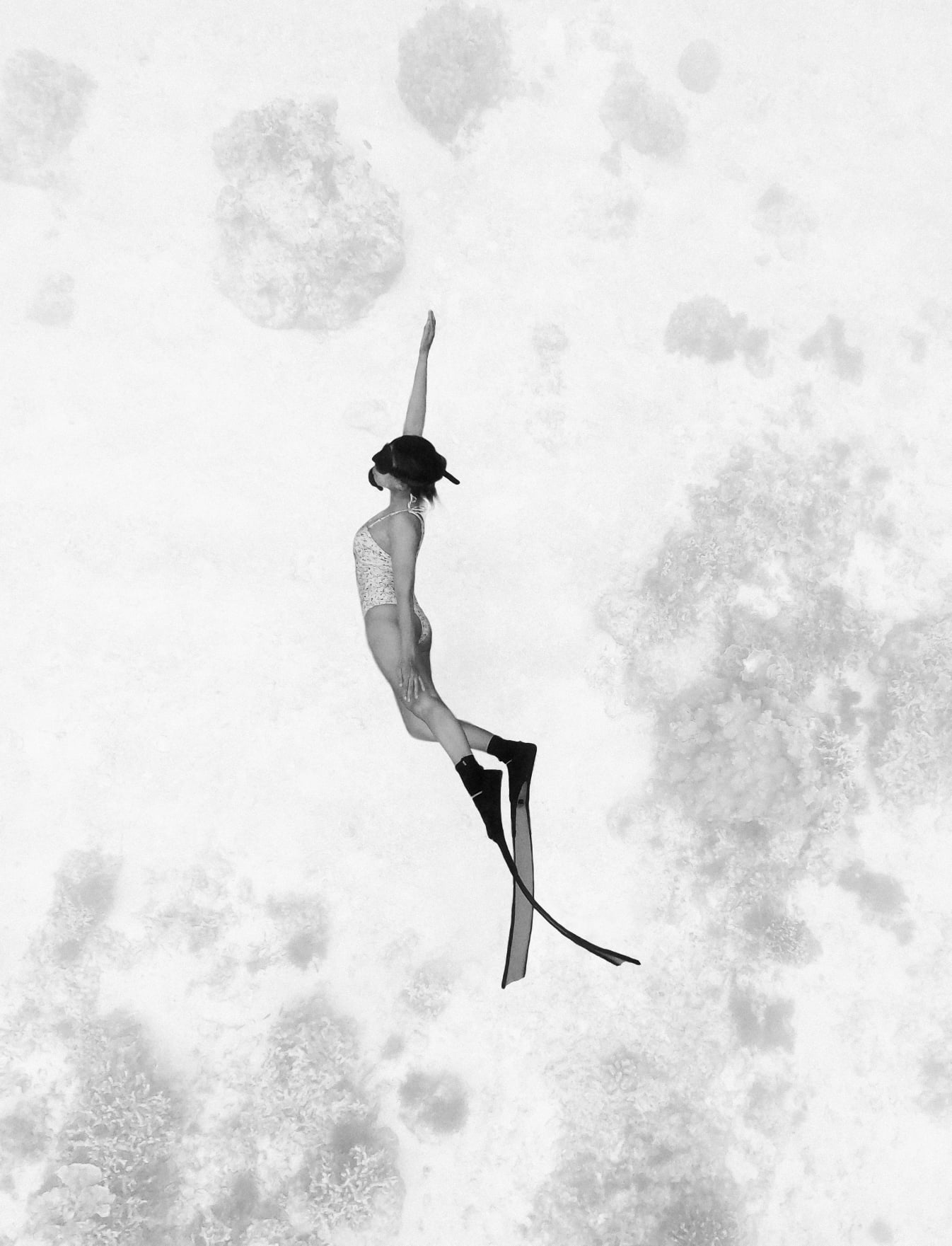
Conclusion: Dapitan’s Dive Scene Is Just Getting Started
If you’re looking for a dive destination that blends raw marine beauty, calm tropical vibes, and historical charm, Dapitan scuba diving is a gem worth discovering. It’s not flashy, and it doesn’t need to be. Its reefs speak for themselves.
From the vibrant drop-offs of Aliguay Island to the macro playgrounds of Balas Balas and the coral-covered slopes of Asinero, Dapitan offers something rare. Uncrowded, untouched, and unbelievably beautiful dive sites. And the best part? You get to be among the first to dive it, talk about it, and keep coming back.
So pack your fins, charge your GoPro, and dive into the heart of Zamboanga del Norte. Dapitan is waiting, calm, colorful, and quietly magical beneath the waves.
FAQ About Scuba Diving in Dapitan City
Is Dapitan a good place for beginner divers?
Yes! Dapitan offers beginner-friendly dive sites like Balas Balas, which features a gentle reef slope and shallow depths. Most local dive centers provide guided dives and PADI-certified instructors to ensure safety and comfort.
What is the best dive site in Dapitan City?
Aliguay Island is considered the best dive site in Dapitan. Its crystal-clear waters, coral walls, and frequent turtle sightings make it a must-dive spot for both beginners and advanced divers.
Are there PADI dive centers in Dapitan?
Yes. The most well-known PADI-certified center is the Dakak Aqua Sports Center, which offers dive courses, fun dives, and equipment rental. Other resorts also partner with experienced local dive guides.
When is the best time to go scuba diving in Dapitan?
The best months for diving in Dapitan are from November to May during the dry season. Expect great visibility, calm waters, and easier boat rides during this time.
How do I get to the dive sites in Dapitan?
Most dive sites are accessible by boat from Dapitan City. Aliguay Island is about 45 minutes away, while Asinero Reef and Balas Balas are closer to the mainland and accessible via short boat rides or even beach entries near resorts.
Related Reads
To the quiet moments and the wild ones, see you soon!

Stories That Travel with The Orange Mermaid ✨
I write for people like you, curious souls, quiet wanderers, and brave first-timers. If you’re craving real stories, personal travel guides, and a glimpse into what it’s like to travel the world as a solo female traveler, you’ll feel right at home at The Orange Mermaid.
With love and a carry-on,
Michelle

